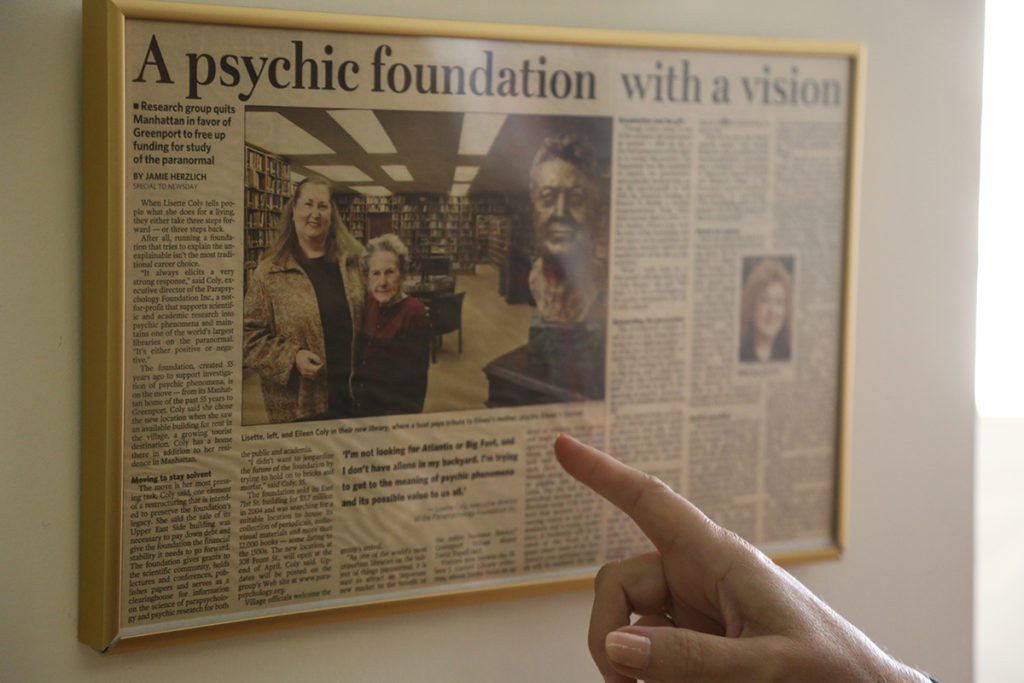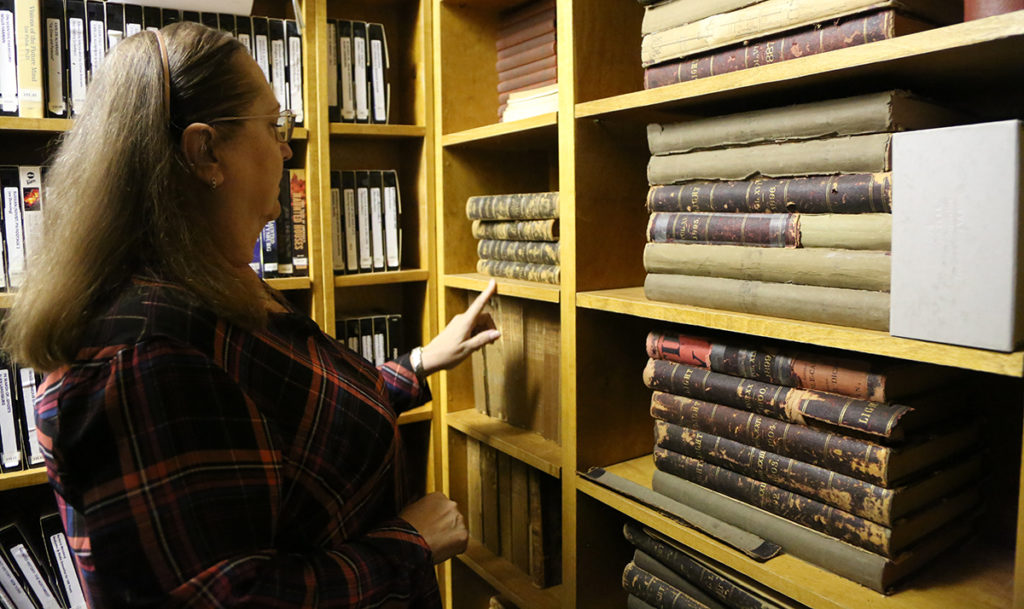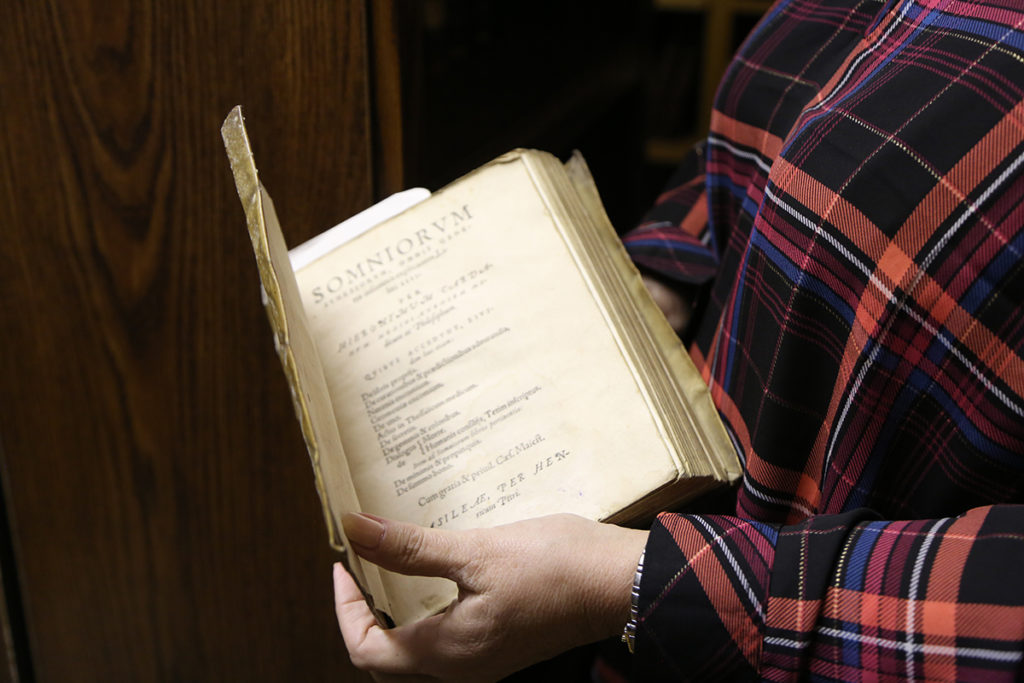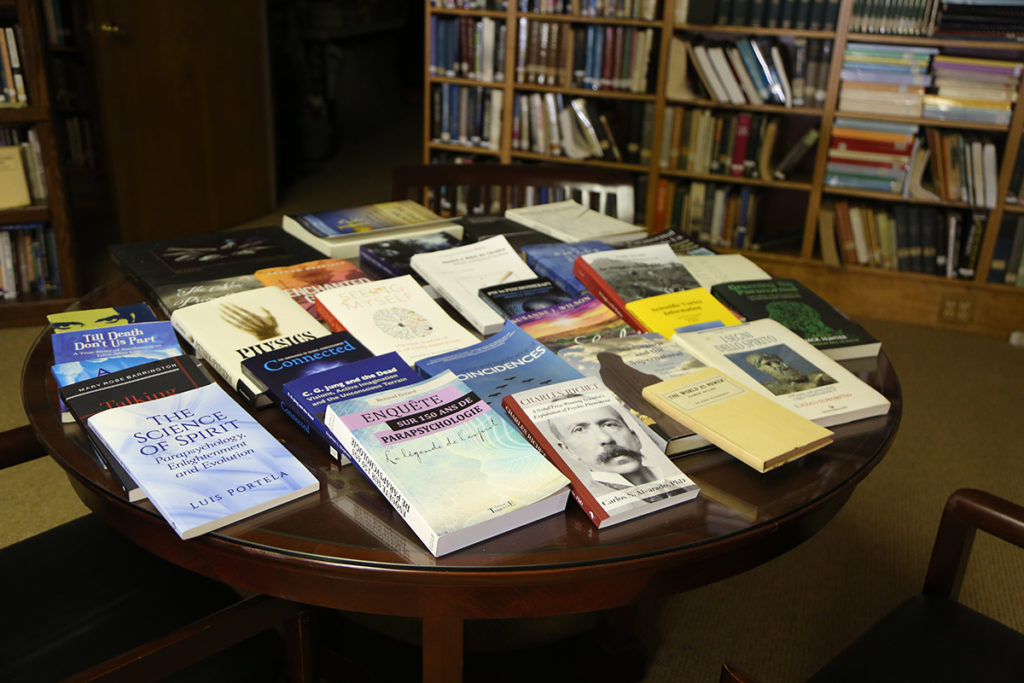Parapsychology library in Greenport looks for a new home

Lisette Coly is not a medium, but her grandmother was.
Eileen Garrett, who died in 1970, “talked with the dead, healed the sick, predicted the future” and “performed miracles for fifty years with undiminished and frightening accuracy,” wrote biographer Allan Angoff. She encouraged critical thinking about psychic phenomena — the field of parapsychology, she felt, needed scientific study.
“If the whole, strange, mystifying psychic gift could be snatched out of the darkness of seance rooms and put into the capable probing hands of science, everybody would feel much better about the subject and the world of science and philosophy could be enriched,” Ms. Garrett said.
In 1951, with the help of politician and philanthropist Frances Bolton, she founded the Parapsychology Foundation in a Manhattan brownstone — an institute dedicated to the scientific study of the field. Now, 70 years later, the foundation keeps one of the world’s most expansive collection of materials on parapsychology, the study of psychic or paranormal phenomena, in a building on Front Street in Greenport. And, financially, it’s struggling.
“The foundation is financially in big distress,” said Ms. Coly, who heads the Parapsychology Foundation. “We’ve been living off an endowment since 1951, so it’s a miracle that we’ve kept going as long as we have. But what I want to do, absent the landlord throwing a curve about trying to sell the building, which that was a shocker — I thought I had a little bit more time — I don’t want the collection broken up.”
The building on 308 Front Street, where the foundation moved in 2005, is listed for $835,000 by the Corcoran real estate agency. It houses over 12,000 carefully curated books on topics ranging from ghosts and the occult to spirituality and quantum physics. Ms. Coly called the collection “arguably one of the top three in the world, and probably the largest of its kind in North or South America.”
“You could fill up shelves with all kinds of schlock books, you know, I call them airport books — how to be psychic, 10 easy lessons or whatever — no, to get on the shelves of the Garrett, it really is pitched to academic research,” she said. “And of course, there are things for the public at large, because we do serve both constituencies, and it’s the public who is at the mercy of all kinds of charlatans and what they see on TV.”
The nonprofit acts as a “clearinghouse for quality information” about parapsychology, housing everything from rare 16th century manuscripts to dissertations and cassettes of global conferences hosted throughout the institute’s history. It even funds grants and scholarships.
“The foundation doesn’t have an ax to grind. We’re not here to jump up and down and tell you, ‘oh, yes, everything that you hear that goes bump in the night is definitely of a paranormal nature,’” Ms. Coly said. “Because obviously, there are many, many explanations for things that go bump in the night before you jump off into the paranormal. At the same time, if you have a really grounded understanding of what these phenomena can portray, or how they exist, then you’re that much ahead of the game in taking the possibility of paranormal existence.”
Finances, however, have dwindled over the years, eventually forcing the nonprofit to sell the Manhattan brownstone and move the collection to Greenport in 2005, where it’s available by appointment only. The foundation is searching for funding to maintain the collection, but if that’s not possible, Ms. Coly hopes to find a university or library to take it. She wants to keep it together.
“Now what I’m trying to do, unless I can find an angel to endow the library — because now, with the mix of selling the building out from under me, it doesn’t make sense to move unless I have the money to move with it,” she said. “I’m just postponing the inevitable. So I’m trying to place it in various universities. I really want the resource used.”
The problem is, she added, taking in the collection wouldn’t be free.
“A lot of universities would like the collection, but it doesn’t come with an endowment,” Ms. Coly said. “From what I understand, it takes money to embed it into the university’s electronic catalogue. They have to have the space for it — in fact, I was here this morning with my daughter at the crack of dawn trying to find out how many linear feet [the collection is] because one of the universities asked.”
The collection has largely fallen out of use since the pandemic, Ms. Coly said. When it was based in Manhattan, people stopped by frequently and until lockdown, the library had been popular in Greenport as well.
The foundation holds strong personal meaning for Ms. Coly. Her mother took over the institute from her grandmother and Ms. Coly followed their footsteps. Even now, she’s aided by her daughter, who is a staff member at the institute.
“It wasn’t meant to be a family affair in the least,” Ms. Coly said. And yet in her library office, her desk is flanked by oil paintings of her mother and grandmother. The institute was founded only a year after she was born; she grew up with it.
“When I sit here alone, buckets of tears,” she said of potentially losing the library.
But either way, the foundation’s legacy will continue, she added. And she doesn’t plan to “give up the ghost yet.”
“If anybody wants to donate on our website at parapsychology.org … we are fully tax-deductible,” she said.













